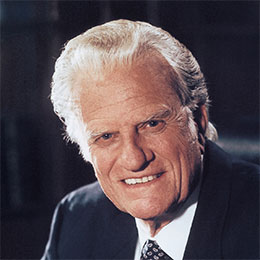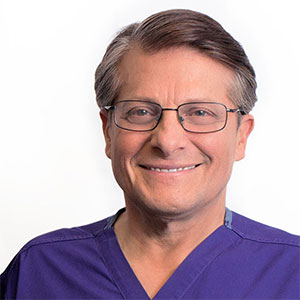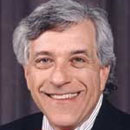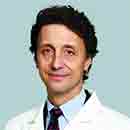C-Force: Muscling in on the Signs of Aging
Of all things, a line from a 1966 Rolling Stones song recently popped into my head: "What a drag it is getting old." I don't recall people taking exception to that lyrical statement back then, and I'm sure most folks wouldn't nowadays. For 81-year-old Mick Jagger, I'm guessing it may have taken on a whole new meaning.
It can be a drag to see the signs of aging as they overtake us. As we are reminded by a recent New York Times article by Dana G. Smith, "Midlife ... is an inflection point. It's a time when our past behaviors begin to catch up with us and we start to notice our bodies and minds aging." These physical changes may appear gradually over the years. They can creep up on you.
It's a medical fact that as we age, our bones shrink in size and density and, as a result, some people find they are shorter in height than they used to be. Muscles, tendons and joints may lose strength and flexibility. A person's reflexes may slow down. Balance starts to become an issue. Kidneys may become less efficient. Knowing where the nearest bathroom is starts becoming a priority when away from home. Changes in vision may occur. Hearing loss may occur. Your skin may become slack, discolored and more wrinkled. Your hair may thin and turn gray. Both men and women naturally start losing muscle mass, which may lead to new aches and pains, or worse. As levels of physical activity begin to slow down, metabolism slows. Even eating a few more calories a day than your body burns can lead to weight gain.
"Sarcopenia is the progressive loss of muscle mass and function that occurs as a natural part of aging," according to Harvard Health. "It affects about 5% to 13% of people ages 60 to 70, and up to 50% of people who are 80 or older. ... Sarcopenia affects men and women equally."
Reports Harvard Health's Lindsay Warner, "Sarcopenia is closely linked with a greater incidence of falls and makes you more likely to break a bone. It can also put you at risk for post-operative complications, longer hospital stays, and is linked with metabolic disorders, cognitive impairment, and mortality. ... As you age, the number and size of your muscle fibers shrinks, causing your muscles to thin, or atrophy. At the same time, your body starts producing fewer of the proteins your muscles need to grow, causing your muscle cells to get smaller."
According to a new Stanford Medicine study funded by the National Institutes of Health and the Stanford Data Science Initiative, researchers found that "massive biomolecular shifts occur in our 40s and 60s. ... A paper describing these findings was recently published in the journal Nature Aging."
"We're not just changing gradually over time; there are some really dramatic changes," said Michael Snyder, a Stanford professor of genetics and the study's senior author. People need to pay attention to their health, especially in middle age, the researchers concluded. Consider "increasing exercise to protect your heart and maintain muscle mass," a report on the study recommends.
"You can build stronger muscles by strength training, which uses resistance (like body weight, free weights, elastic bands, or specialized machines) to build muscle, or by power training, which focuses on both strength and speed," recommends Harvard Health. "Ideally, you'd do a combination of both, as they help build and maintain muscle and can also bolster your bones by stimulating them to get stronger. ... People who don't do strength training as they age can expect to lose four to six pounds of muscle per decade -- and that muscle is often replaced by fat. You're never too old to benefit from the gains made through strength and power training."
Harvard Health also stresses the importance of building muscle through proper nutrition.
"You need quality sources of protein in your diet to help build lean muscle mass," writers Warner. "But you also need carbohydrates for fuel and energy, and healthy fats such as olive oil, avocados, nuts, and fatty fish to help supply energy to muscles. ... Gaining and maintaining muscle has some unexpected benefits too, such as improving your heart health, helping to control your blood sugar, improving cholesterol levels."
According to Harvard Health, "gaining and maintaining muscle ... can also improve longevity, with one study finding that middle-aged adults who did just one to three strength workouts a week were 40% to 70% less likely to have a heart attack or stroke. And, because weight and power training helps strengthen the muscles around your joints, it can expand range of motion in joints and help prevent or ease lower back pain."
"What our older years will look and feel like isn't set in stone," Smith writes, "and there's still time to make adjustments to improve health and well-being. ... Strength training is critical to offset declines in muscle mass and bone density, and aerobic exercise has important cardiovascular and other health benefits." Dr. Arun Karlamangla, a professor of medicine at the University of California, Los Angeles, who specializes in geriatrics, calls physical activity "the silver bullet."
"Susan Charles, a professor of psychological science at the University of California, Irvine, thinks that life satisfaction reaches a nadir in middle age because it's a time when people start to reflect on their lives," Smith writes.
"Midlife is a time where you kind of reconcile what you have to what you were hoping and dreaming of," Charles says.
"But, she added, by the time people reach older adulthood, most have come to terms with it all," Smith writes. "Middle age isn't the happiest time of life (that's old age), nor is it the most fraught (that's young adulthood), but it is relatively stable."
========
Follow Chuck Norris through his official social media sites, on Twitter @chucknorris and Facebook's "Official Chuck Norris Page." He blogs at http://chucknorrisnews.blogspot.com. To find out more about Chuck Norris and read features by other Creators Syndicate writers and cartoonists, visit the Creators Syndicate webpage at www.creators.com.
Copyright 2024 Creators Syndicate, Inc.
























Comments